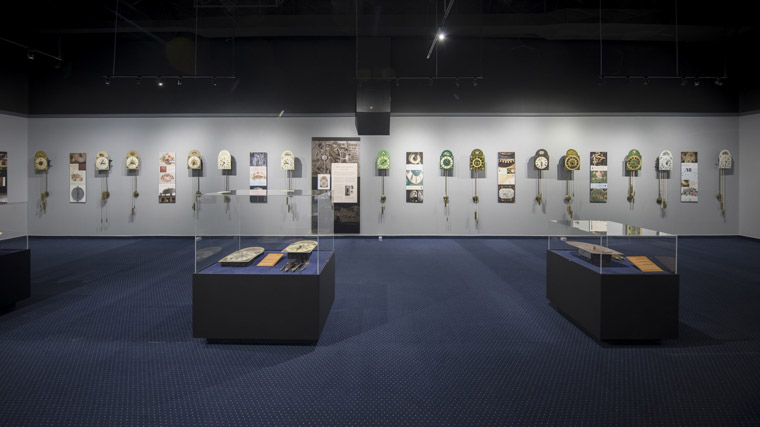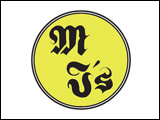I walked into Mennonite Heritage Village (MHV) for my first day of work on March 4, 2014, excited and nervous about the challenge, knowing I had big shoes to fill from my predecessor, Roland Sawatzky. I have had the privilege of leading the curatorial department at MHV for eleven years now, but on August 4, I will be stepping down from my role as Senior Curator, to be able to focus more on family.
As I look back on these years at MHV, the first thing that stands out is the people I have had the opportunity to work alongside. When I arrived at the museum, I was amazed at the high level of community involvement and engagement at MHV. It had a big impact on me to reflect on the fact that many of our long-time volunteers have been working at the museum for decades – some, for well over 40 or 50 years. A big thank you to the staff and volunteers with whom I have had the privilege of working – for all your help, but even more so, for your kindness and friendship, over these many years.
Another thing that stands out, when I think back on these years at MHV, are the stories – the funny, the heartbreaking, and the tender – I have been able to hear and share through our artefacts. I remember, for example, an older gentleman telling me the story of his leather jacket and the day he wore it as he reported for his duty as a conscientious objector during the Second World War. He spoke softly as he described boarding his train, only to find it full of military recruits, also reporting for duty. Feeling very conspicuous, he said he kept very quiet for the duration of the trip. Another time, I opened a box of baby clothing that had been mailed to the museum from a donor in Ontario. I remarked to my assistant that the clothing was in such pristine condition, only to read in the enclosed letter that the clothing belonged to the donor’s sibling who had only lived for a few days – the baby had never had the chance to wear most of them. There was the time I sat down with an older couple in their 90s who had donated a to-scale model the man had made of his wife’s childhood home. At one point in the conversation, the man looked at his wife, pointed to the front steps of the model house, and reminisced how they had sat on those steps when they were courting, looking up at the moon together. A donor told the story of her mother, who was not Mennonite but married into a Mennonite family in Steinbach in the early-to-mid 1900s. As she had struggled to adjust to life in the community as an outsider, her mother had joked that everything in Steinbach seemed to be a sin, except for eating! These are only some of the stories that come to mind, but it is remarkable to consider that each of the over 17,000 objects in the artefact collection each have their own stories like these. It has been my privilege to hear them and to have the honour of sharing some of them with the community through our exhibits.
Over these eleven years, we have also been able to accomplish many large projects. There have been many restoration projects in the village, but when I walk by the Waldheim House and see the thick, thatched roof, I remember what still is the most challenging – and rewarding – restoration project I was able to be a part of at the museum. In 2015, this building stank of mold and had fungus growing on the interior walls. We knew we needed to act – and fast. So, in 2016 and 2017, we received a large federal grant and began. Through the skillful work of Myron Hiebert and his crew at Walls That Speak, the building’s rotten logs were replaced; the sagging structure was reinforced; moisture issues in the building were addressed; mould remediation was completed; and the attic structure was reinforced to withstand the substantial weight of the next step of the project: a brand new roof thatched by a Master Thatcher with phragmites reed harvest that winter near Dauphin Lake, Manitoba. The semi-trailer full of reed arrived in spring 2017 and by June, the thatcher had arrived and the second phase of the project began. It was completed on Canada Day 2017, just in time to celebrate Canada’s 150th, allowing visitors to witness the roof being finished by the thatcher and his team. This was a unique heritage demonstration that had not been seen at the museum in a generation – and will not be again for another one! We were appreciative to have the project recognized by the Association of Manitoba Museums with its Award of Excellence in 2018.
One of the aspects of my work that I have enjoyed the most is making history come alive through creating new exhibits. I have enjoyed challenging our visitors to think about history in a new light – less about dates and names, and more about how it broadens our perspective and makes us think differently about ourselves and our world. Exhibits like 2021’s “Mennonites at War” incorporated the stories of Mennonites who were conscientious objectors, but also those who were soldiers, either in Canada or in the Soviet and German armies during the Second World War, challenging commonly held perceptions of Mennonites and their actions during wartime. “Leaving Canada: The Mennonite Migration to Mexico” in 2022 was another memorable exhibit for me. It explored the effects of public-school legislation in Manitoba in 1916 and Saskatchewan in 1917. This legislation was introduced and then enforced, often without regard for the communities it sought to serve or with little pity for those traditionalist Mennonites who opposed sending their children to public schools, causing eight thousand of them to leave Canada for Latin America. 2018’s “The Art of Mennonite Clocks” similarly took visitors assumptions about Mennonite wall clocks – often described, especially by younger generations, as ‘ugly,’ ‘outdated,’ or ‘unstylish’ – and turned them around, showcasing these priceless artefacts as works of art. Each of these exhibits were also recognized with the AMM’s Award of Excellence.
As I leave MHV, I carry these stories, and many more, with me. I am deeply grateful to have been able to serve at MHV in a role that challenged me, caused me to grow, and gave me the opportunity to be part of the community here in Steinbach and the wider Mennonite history community in Manitoba and Canada. Thank you!




